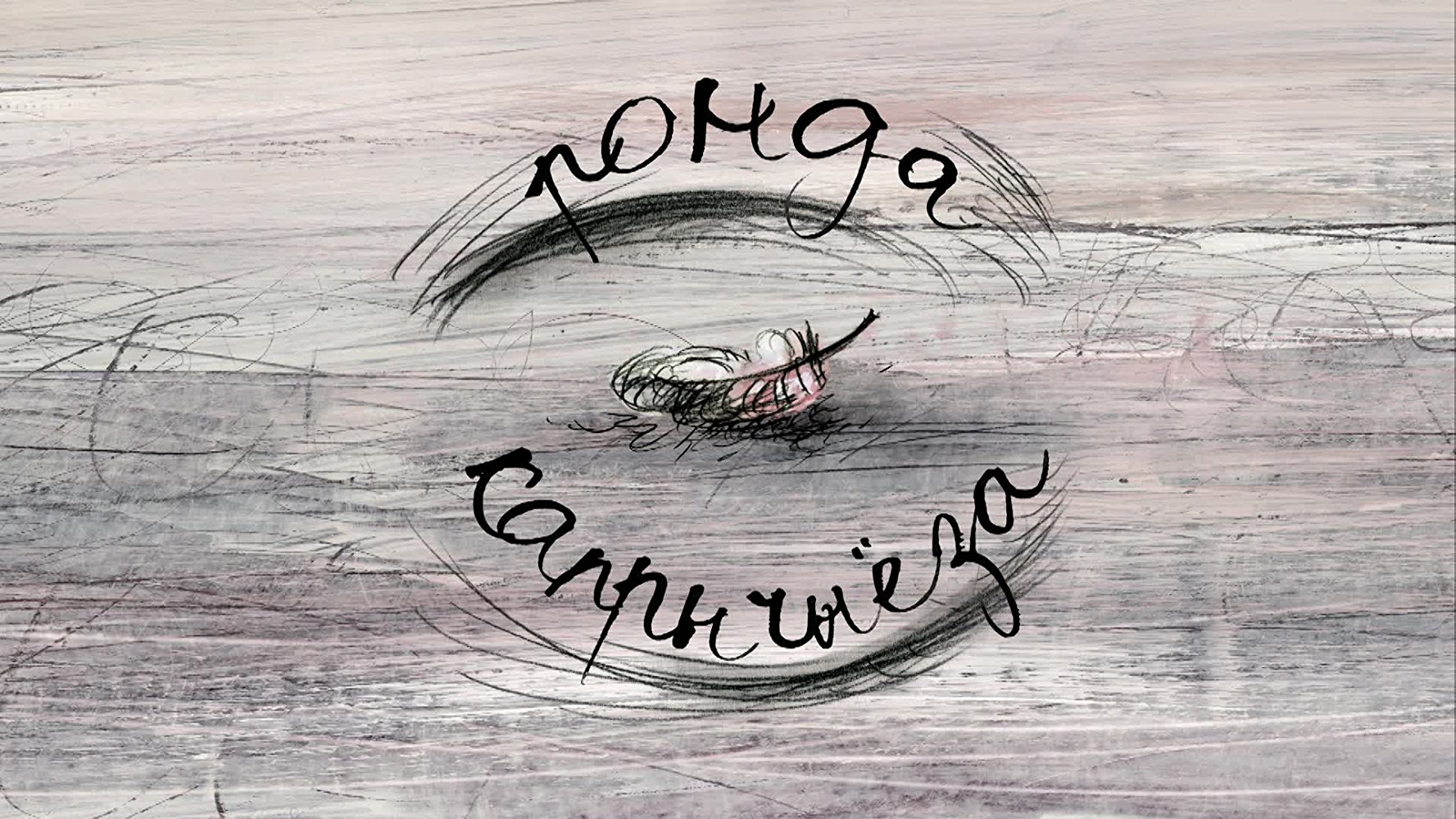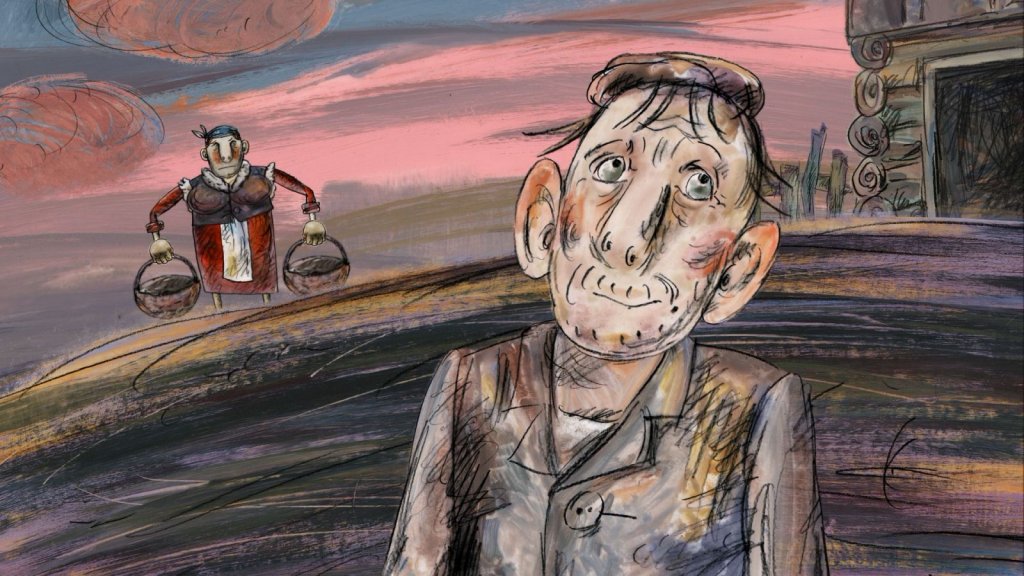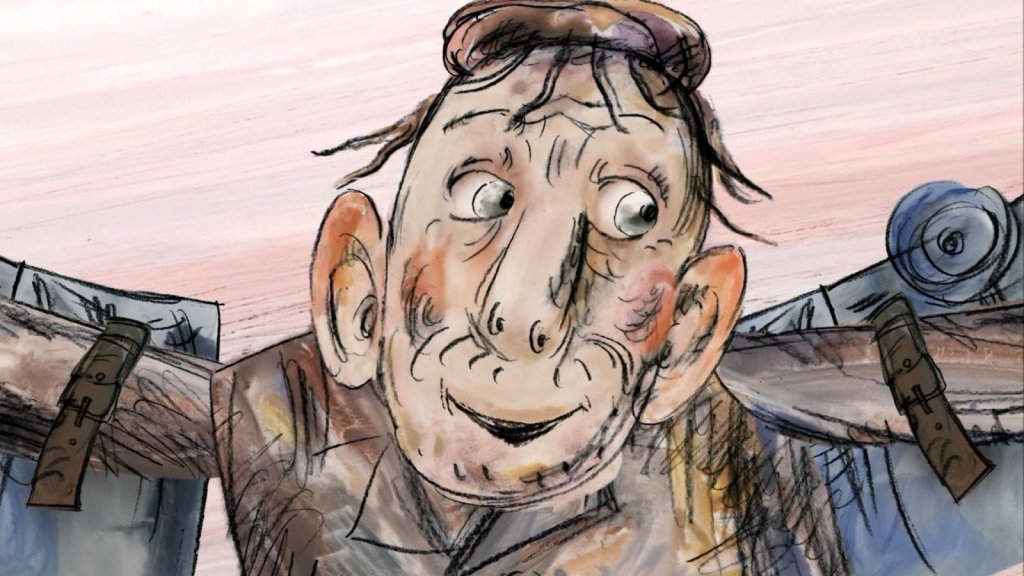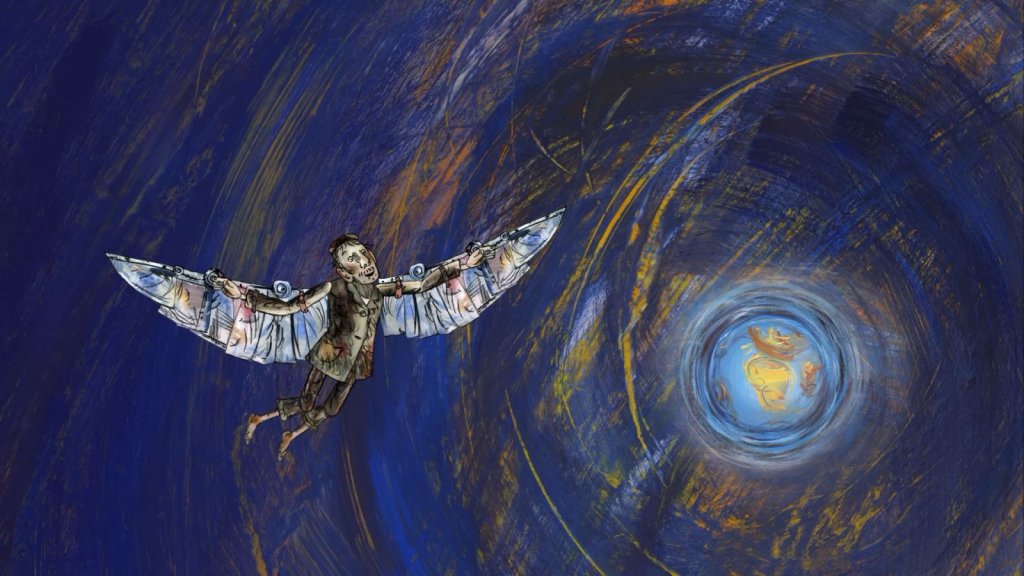Title of the work
Studio / Production Company
Country of the First Edition
Original Language
First Edition Date
First Edition Details
Ронда-капрычыёза [Rondo-Capriccioso]. Directed and written by Igor Volchek, Music by Andrei Ledenev. Minsk: Belarusfilm, 2014. 13 min.
Running time
Format
Date of the First DVD or VHS
Available Onllne
The movie is available on youtube channel (accessed: August 17, 2018).
Genre
Animated films
Computer animation films
Myths
Short films
Target Audience
Children (0+)
Cover

DVD cover courtesy of Belarusfilm studio. The DVD was released in 2014.
Author of the Entry:
Hanna Paulouskaya, University of Warsaw, hannapa@al.uw.edu.pl
Peer-reviewer of the Entry:
Elżbieta Olechowska, University of Warsaw, elzbieta.olechowska@gmail.com
Susan Deacy, University of Roehampton, s.deacy@roehampton.ac.uk

Portrait of Igor Volchek courtesy of kino-teatr.ru (accessed: May 30, 2018).
Igor [Ihar] Volchek [Volchak]
, b. 1946
(Composer, Director, Illustrator)
Igor Volchek (Ігар Волчак / Игорь Волчек) is a Belarusian director, animator and composer. He is also a professional pianist. In 1979-81 he studied the art of animation at the workshop of Yuri Norshteyn [Norstein, Юрий Норштейн] at the Higher Directing Courses at the Goskino USSR (the USSR State Committee for Cinematography). Since completing the courses, he has been working at the “Belarusfilm” studio.
Igor Volchek has directed over 25 movies, and is especially famous for Capriccio (1986), Scerzo (1994) and Pastoral (1998). He teaches at Belarusian State Academy of Arts. He is a winner of many Belarusian and international competitions.
Bio prepared by Hanna Paulouskaya, University of Warsaw, hannapa@al.uw.edu.pl
Summary
The movie shows the story of Daedalus/Icarus inspired by the famous Pieter Bruegel picture. The story presents a yearly cycle, starting and finishing with spring.
The protagonist, Antos, lives in Belarusian countryside. He has a wife, a daughter, two little sons, a grandmother, a dog and a cat. They also have some cattle, chickens and interested neighbours. Antos is very fond of technology and inventions. He studies Leonardo da Vinci schemes and makes many technical improvements to village life. However his grumpy wife makes sure he completes all his “normal” work. The dog watches him and tells the wife about every “misdemeanor” of Antos.
The movie depicts the entire yearly agricultural work of Antos and his wife. Children usually play, the grandmother watches TV, and the daughter dreams of going to Minsk, which she finally does (even appearing on TV).
In all his free time Antos constructs something in his hidden place. The viewer cannot see what it is until the next spring comes. At the finale of the movie we see Antos flying as a stork over his house and the world, and only grumpy shouts of his wife makes him fall and the scene transforms into the Bruegel picture.
Analysis
The movie beautifully puts Icarus’ myth into the Belarusian context. Most probably it was influenced by the Bruegel picture containing elements of agricultural and navy life. Actually only the elements of Bruegel’s interpretation are present in the movie: a person flying (eventually falling), being observed by an astonished shepherd and plowman (Ovid. Met. 8.218-219). There is no element of detention and having to use artificial wings to fly away or of a father teaching his son the rules, and the son falling to his death because of disobedience. It seems that Antos appreciates his village life, trying to improve it, and having the possibility to "fly" in the reality he lives in. He is compared to a stork, who always return to his home. Actually there is one person who perceives rural style of life as an imprisonment, which is the daughter longing to move to a big city (Minsk, the capital of Belarus). However she uses very normal means to fulfill her dream — a regular bus to the city.
Belarus is recognizable thanks to the style of architecture, landscape, clothes, instruments, and furniture, but especially to the image of storks flying over the land in the beginning of the movie and flying away when the autumn comes. (Due to the number of storks, Belarus is called “the land under the white wings” after an Uladzimir Karatkevich essay.) There are elements of Belarusian language in the words spoken or shouted by the protagonists, however we may hear clearly only the name of the husband and beginnings of sentences, for example: “Антось, я табе ўжо…” [Antos, I have told you…]. Actually, the name “Antos” [=Antony] is used in its typical Belarusian form. We may consider also the image of a tractor as a symbol of Belarus as it is one of the most recognizable products of Belarusian industry and is called “Belarus” as well.
The wife’s character is an important addition to the myth that describes the reasons of Icarus’ fall. Her image is rather misogynic, she shouts instead of speaking and tries to control everything. She does not allow Antos to fly. But at the same time she is an organising element in this rural life. It seems that all the seasonal work is done thanks to her efforts, what makes her similar to mother-nature figure. This role of a woman as a housemother is common for Belarusian post-Soviet reality, where women are granted responsibilities, not necessary privileges, of feminist movements. However, we should notice also some elements of beauty in the women shown in the animation. There are even romantic episodes or a joyful scene in the bath house.
The animation shows contemporary situation in the Belarusian village. A multigenerational family lives in one house. The agriculture combines modern technologies and 19th-century implements. Antos likes to drink vodka cooled in the river in the morning. The village is isolated and unpromising. However, beauty of nature and enthusiasm of Antos make his (and his family) life easier. Antos himself is evidently compared to Leonardo, Daedalus and Icarus.
Further Reading
Энциклопедия отечественной мультипликации [The Encyclopedia of Russian Animation], sost. S. V. Kapkova, Moskva: Algoritm, 2006, 166.
Karpilava, Anatanina [Карпілава Антаніна], “Анімацыйнае капрычыо" [Animation Capriccio], Mastatstva [Art] 3 (2009): 47–49.
Profile at kinopoisk.ru (accessed: August 17, 2018).
Profile at animator.ru (accessed: August 17, 2018).
Addenda
Screenshots courtesy of Belarusfilm studio:


The Remaining Production Credits:
Art direction by Galina Ramonova; Producer Elena Korziuk.
The movie’s title written with the use of the Belarusian Latin script, łacinka (latsinka): Ronda-kapryčyjoza.


